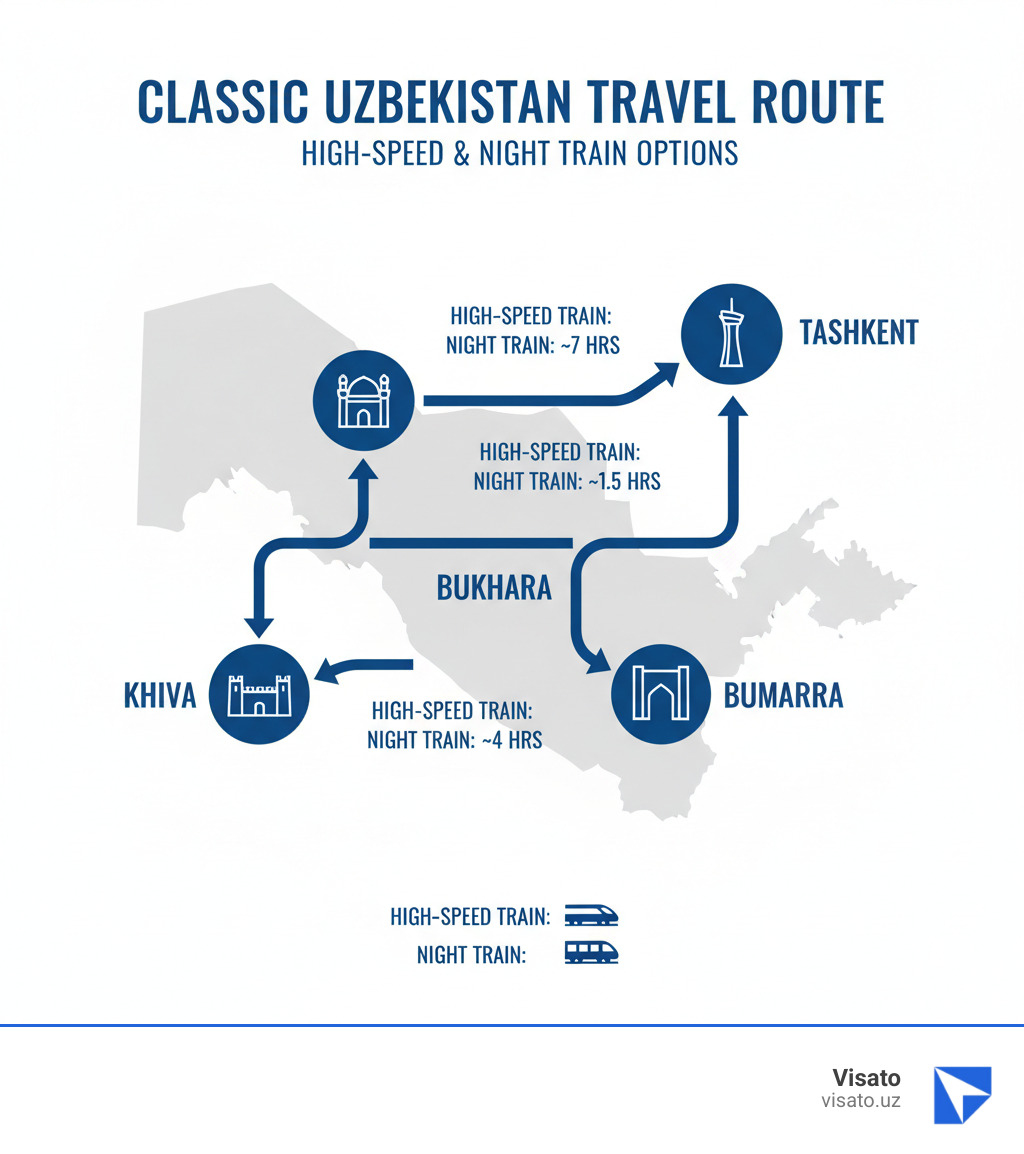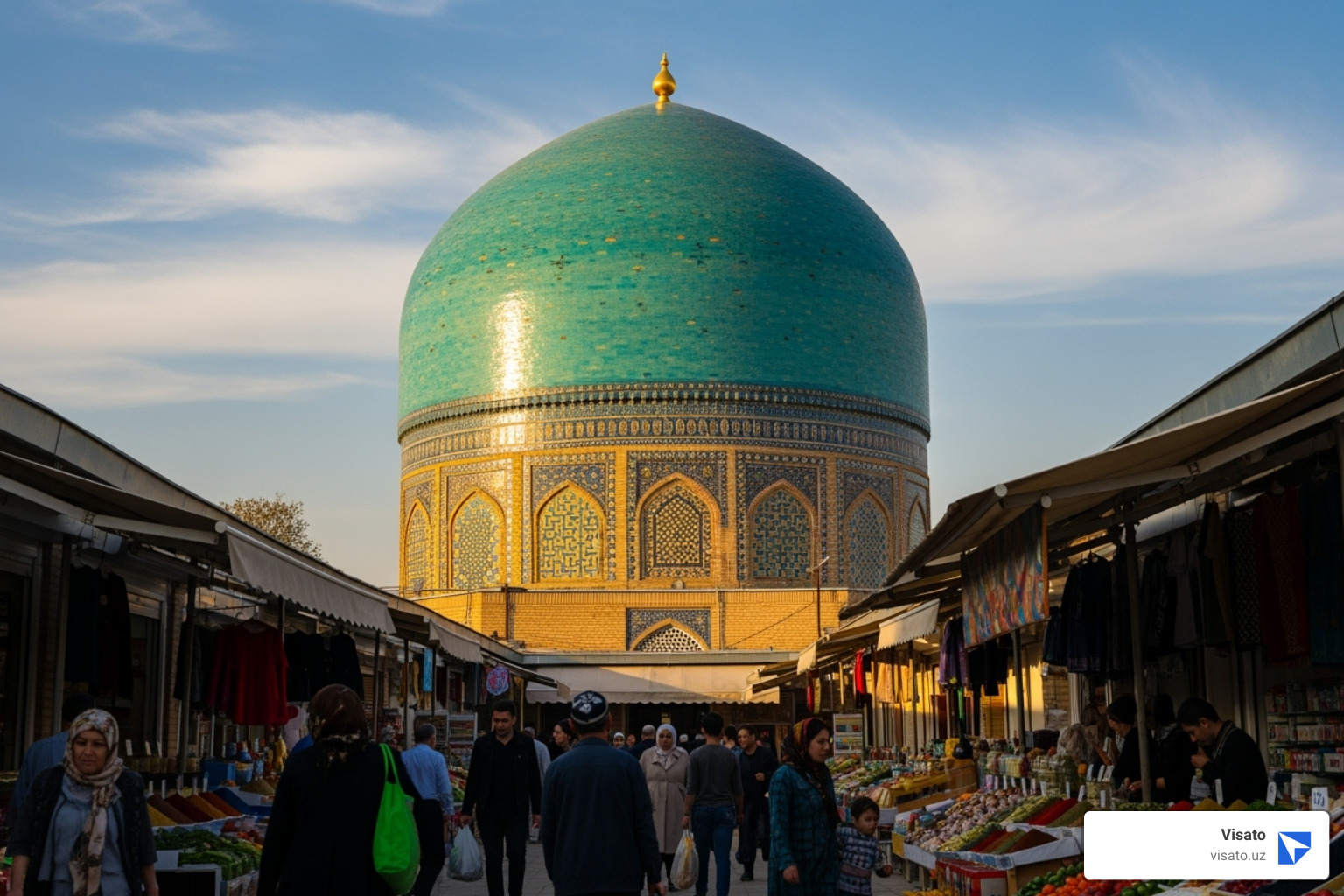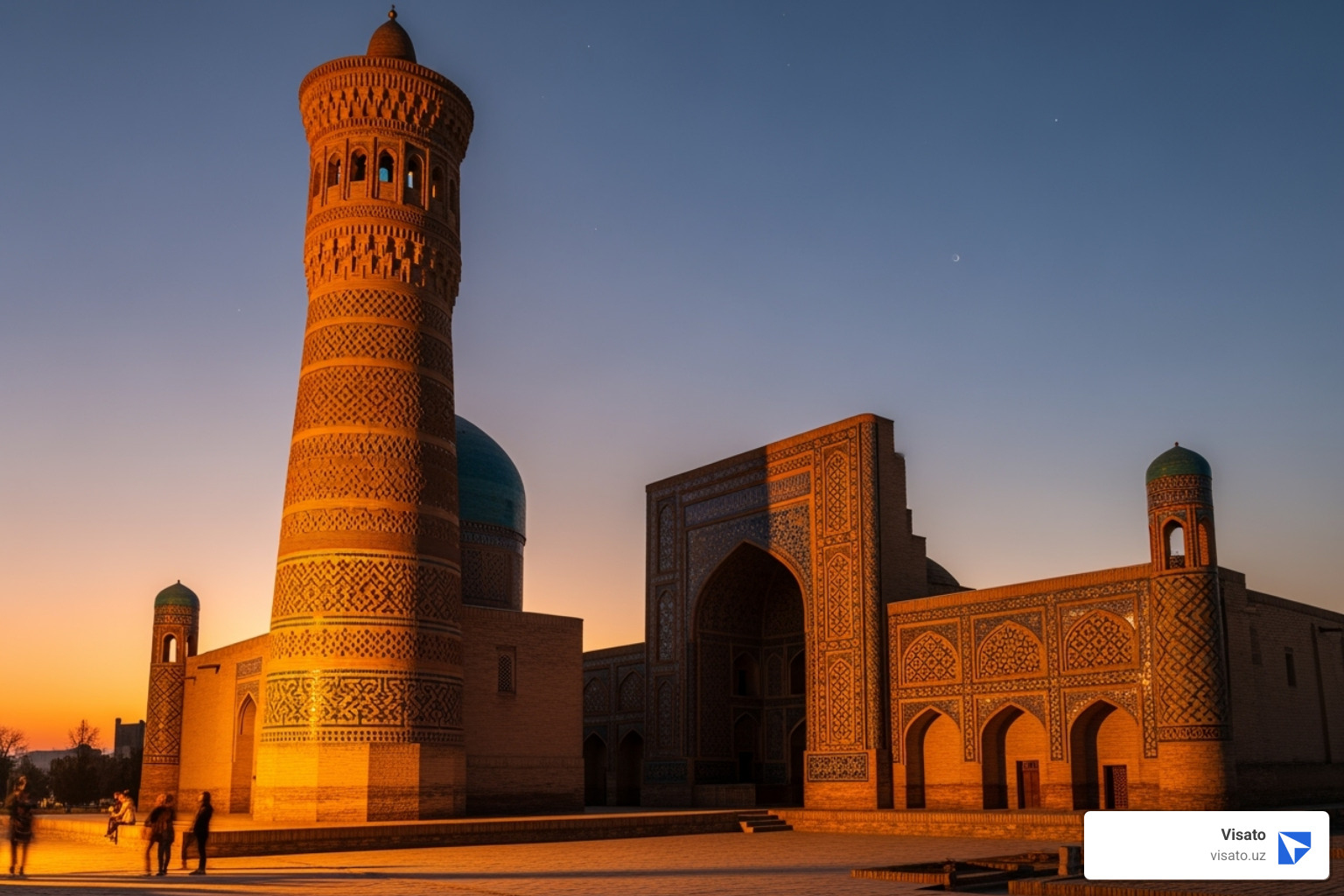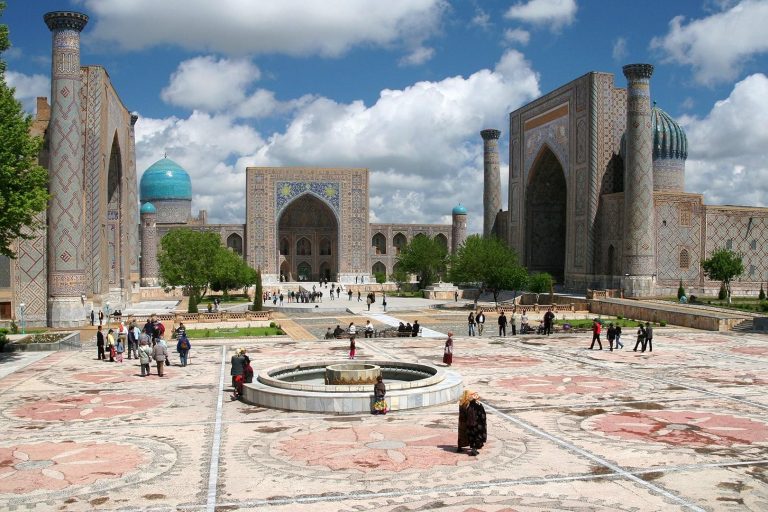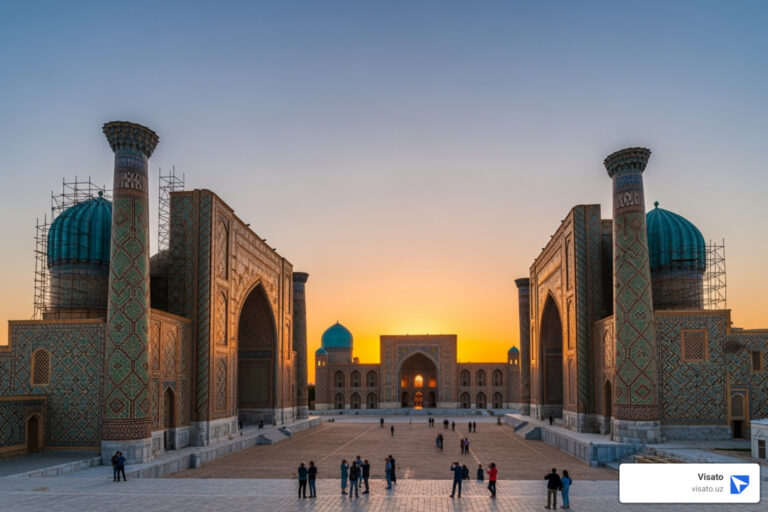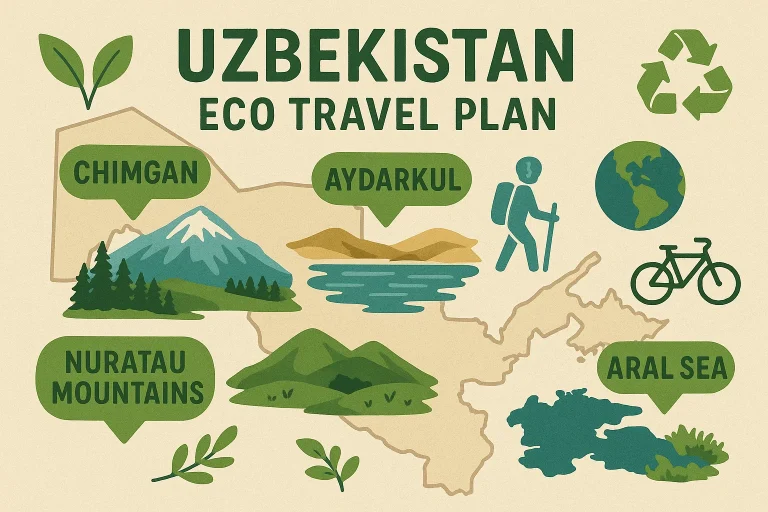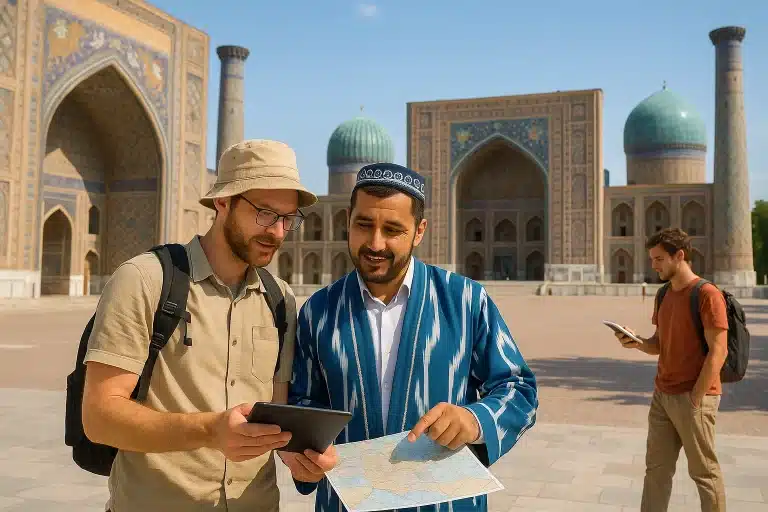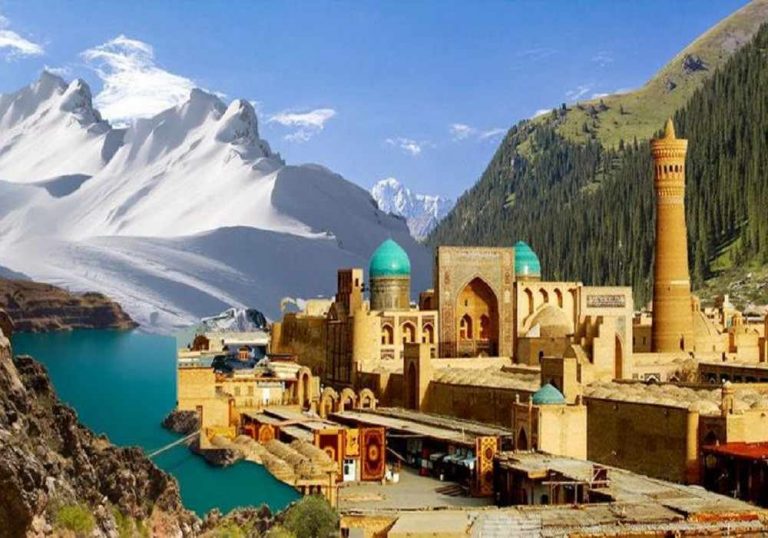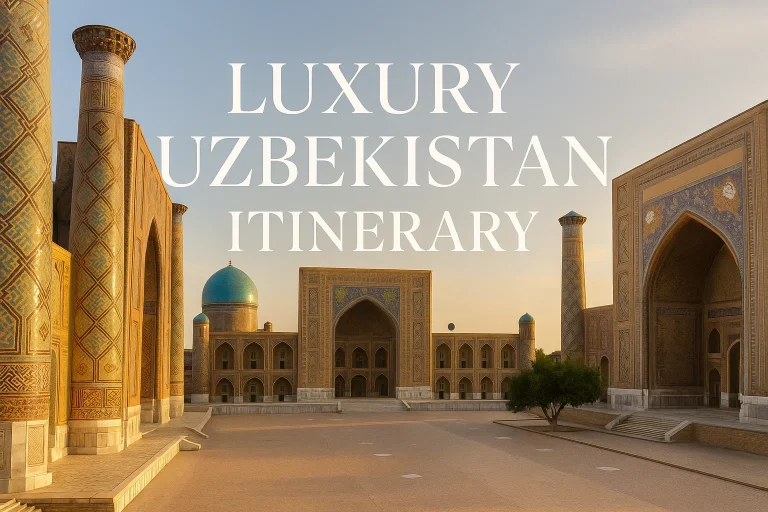Why an Uzbekistan Travel Itinerary is Essential for Your Silk Road Adventure
A well-planned Uzbekistan travel itinerary is key to open uping one of Central Asia’s most captivating destinations. This landlocked country, the heart of the ancient Silk Road, offers stunning Islamic architecture, rich history, and authentic cultural experiences largely untouched by mass tourism.
Quick Answer: The Classic Uzbekistan Travel Route
For most travelers, the ideal Uzbekistan travel itinerary follows this route:
- Tashkent (1-2 days) – Modern capital with Soviet-era architecture and vibrant bazaars
- Samarkand (2-3 days) – The crown jewel featuring the iconic Registan Square
- Bukhara (2-3 days) – Well-preserved old town with 140+ architectural monuments
- Khiva (2 days) – A living museum within ancient city walls
Recommended Duration: 7-14 days, depending on your pace and interests
Best Travel Period: Spring (April-June) or Autumn (September-October) for pleasant weather
Getting Around: High-speed Afrosiyob trains connect major cities in 2-4 hours
Planning a trip to Uzbekistan can seem overwhelming. While the country has become more accessible with simplified visas and better infrastructure, reliable information can be scarce. This guide provides everything you need for your Uzbekistan travel itinerary, from must-visit cities and transport tips to budgeting advice for any travel style.
I’m Nariman Huseynov. With five years of experience helping travelers in Central Asia, I’ll share my knowledge to help you plan a successful Uzbekistan travel itinerary and ensure your Silk Road adventure is unforgettable.
Essential Pre-Trip Planning for Uzbekistan
Before you start packing, let’s cover the essentials for a smooth Uzbekistan travel itinerary.
The Best Time to Visit Uzbekistan
Uzbekistan’s weather has dramatic seasonal swings, so timing your trip is crucial. The best times to visit are spring (April-June) and autumn (September-October). During these months, you’ll enjoy pleasant temperatures in the low to mid-20s°C (around 70°F), perfect for exploring.
Summer (June-August) is brutally hot, with temperatures often exceeding 40°C (104°F). Winter can be very cold, with temperatures dropping below freezing, which can limit sightseeing opportunities.
Visa Requirements: Your Gateway to the Silk Road
Getting into Uzbekistan is easier than ever. Most nationalities can enter visa-free or with an e-visa, which typically costs $20 USD for a 30-day stay—plenty of time for a comprehensive Uzbekistan travel itinerary.
However, the official e-visa website can be frustrating, with technical glitches, document upload issues, and payment failures causing stress for applicants. To avoid this, apply well in advance.
At Visato.uz, we eliminate these headaches with a fast, simple, and secure application process, delivering your e-visa in 2-3 business days. Our team handles the technical side with 24/7 support, ensuring a smooth experience.
Learn about the Uzbekistan e-visa requirements
How to Budget for Your Trip
Uzbekistan is a delightfully affordable destination, offering exceptional value. The local currency is the Uzbekistani Som (UZS), but it’s wise to carry some US dollars as a backup, as cards are not accepted everywhere.
Here are some daily estimates for your Uzbekistan travel itinerary:
| Category | Budget Traveler (per day) | Mid-Range Traveler (per day) | Luxury Traveler (per day) |
|---|---|---|---|
| Accommodation | €20 – €30 | €50 – €100 | €100 – €200+ |
| Food | €10 – €20 | €20 – €40 | €40 – €80+ |
| Transport | €5 – €15 | €15 – €30 | €30 – €50+ |
| Activities | €5 – €10 | €10 – €25 | €25 – €50+ |
| Total Estimate | €40 – €75 | €95 – €195 | €195 – €380+ |
- Accommodation: Budget travelers can find hostels or guesthouses for around €20/night. Mid-range boutique hotels in traditional houses cost €50-€100. Luxury options start at €100-€200+.
- Food: Local eateries are incredibly cheap, with a hearty meal like plov costing just a few euros.
- Transportation: The high-speed Afrosiyob train between major cities is very affordable, with tickets costing €7-€12.
- Tipping: Appreciated but not obligatory. Some restaurants add a 10-15% service charge. For taxis, rounding up the fare is common.
- Cash vs. Cards: Cash is king for most transactions, including bazaars, taxis, and smaller guesthouses.
How to Structure Your Uzbekistan Travel Itinerary
How long should you spend in Uzbekistan? It depends on your travel style.
- 7 Days: A highlights tour of Tashkent, Samarkand, and Bukhara, covering the most iconic sights.
- 10 Days: Allows for a more relaxed pace in the main cities or the addition of Khiva or the Fergana Valley, a region known for traditional crafts.
- 12-14 Days: The ideal duration for a comprehensive experience. This allows you to visit all four major cities (Tashkent, Samarkand, Bukhara, and Khiva) and add unique experiences like a desert yurt stay or a trip to the Aral Sea.
The classic route (Tashkent → Samarkand → Bukhara → Khiva) is easy to steer independently thanks to the excellent train network. For off-the-beaten-path regions like the Aral Sea or desert camps, a local guide is recommended to handle logistics.
The Ultimate 2-Week Uzbekistan Travel Itinerary
This 2-week Uzbekistan travel itinerary balances iconic sights with authentic experiences, giving you time to absorb the magic of each Silk Road destination.
Days 1-2: Tashkent – A Blend of Soviet and Silk Road
Your Uzbekistan travel itinerary begins in Tashkent, a capital blending Soviet grandeur with modern Central Asian energy. A taxi from the airport (TAS) to the city center is cheap and easy with the Yandex Go app.
- Chorsu Bazaar: Experience a sensory explosion under the giant green dome, with spices, fresh produce, and the smell of freshly baked non bread.
- Hazrati Imam Complex: A peaceful, spiritual center housing one of the world’s oldest Qurans, the 7th-century Quran of Osman.
- Tashkent Metro: Explore the ornate underground stations, each a unique work of art with chandeliers, mosaics, and marble.
- Museum of Applied Arts: Find Uzbek craftsmanship in a beautifully restored traditional mansion.
- Food: For a taste of the national dish, head to the Plov Centre. For excellent lagman (noodle soup), try Qorasaroy Lagman.
Days 3-5: Samarkand – The Crossroads of Culture
A two-hour ride on the high-speed Afrosiyob train brings you to legendary Samarkand, the crown jewel of Timur (Tamerlane)‘s empire. Book train tickets in advance, especially during peak season.
- Registan Square: This breathtaking plaza is framed by three magnificent madrasahs. Visit during the day for the details and return at sunset for the magical golden light.
- Gur-e-Amir Mausoleum: The final resting place of Timur, this masterpiece of Timurid architecture features a stunning ribbed turquoise dome.
- Bibi-Khanym Mosque: Once one of the Islamic world’s largest mosques, its enormous scale still commands respect.
- Shah-i-Zinda Necropolis: Our favorite spot, an avenue of mausoleums with some of the most exquisite 14th-century tilework you will ever see. Visit at sunrise for a serene experience.
- Ulugbek’s Observatory: Find the 15th-century scientific achievements of Timur’s astronomer grandson.
Days 6-9: Bukhara – The Noble City
The train to Bukhara takes you to a city that charms with its lived-in authenticity. The UNESCO-listed old town is a living city with over 140 architectural monuments.
- Poi Kalyan Complex: Bukhara’s spiritual heart, dominated by the 47-meter Kalon Minaret.
- Lyabi-Hauz: A tranquil plaza around a pond, perfect for sipping tea and watching local life unfold.
- Chor Minor: A charming and photogenic madrasah with four turquoise-domed minarets.
- The Ark Fortress: A massive royal town-within-a-city that housed Bukhara’s rulers for centuries.
- Ismail Samani Mausoleum: A 10th-century architectural masterpiece with intricate brickwork that survived the Mongol invasion.
For the best experience, get lost in Bukhara’s winding alleys and consider visiting a traditional hammam (bathhouse).
Days 10-12: Khiva – The Open-Air Museum
An overnight train from Bukhara brings you to Khiva. The journey is an experience in itself, and we recommend arranging an early check-in at your hotel.
Khiva’s walled city, Itchan Kala, is Central Asia’s first UNESCO World Heritage site and feels like stepping into a fairytale. Key sights include:
- Kalta Minor Minaret: An iconic, unfinished minaret covered in striking turquoise tiles.
- Juma Mosque: Features over 200 carved wooden columns, some dating back to the 10th century.
- Kunya-Ark: Climb the watchtower of this former rulers’ residence for panoramic sunset views over Itchan Kala.
- Pahlavon Mahmud Mausoleum: Honors Khiva’s patron saint with a magnificent turquoise dome and stunning tilework.
To truly experience Khiva, explore its deserted streets at sunrise and get lost in its labyrinthine passages.
Optional Add-on: Nukus & The Aral Sea
With an extra 2-3 days, consider a trip to Nukus and the Aral Sea. This sobering journey includes the Savitsky Museum, with its world-class collection of forbidden Soviet avant-garde art, and Muynak’s ship graveyard, a haunting memorial to an environmental disaster. This region is best explored with a local tour operator.
Days 13-14: Return to Tashkent & Departure
From Urgench (near Khiva), take a 1.5-hour domestic flight (around €75) or a 15-hour overnight train back to Tashkent. Spend your last day picking up souvenirs at Alay Bazaar before heading to Tashkent International Airport (TAS) for your departure, your head full of Silk Road memories.
Practical Traveler’s Guide to Uzbekistan
With your route mapped, let’s cover the practical details that will make your Uzbekistan travel itinerary a success.
What to Eat: A Culinary Journey
Uzbek cuisine is a hearty, flavorful blend of Central Asian, Middle Eastern, and Russian influences. Don’t miss these essential dishes:
- Plov (Palov): The national dish, a fragrant rice pilaf with meat, carrots, and onions, often cooked in massive cauldrons.
- Shashlik: Succulent skewers of marinated lamb, beef, or chicken grilled over charcoal.
- Manti: Steamed dumplings filled with seasoned meat and onions, served with sour cream.
- Samsa: Baked pastries filled with meat, pumpkin, or potatoes, cooked in a tandoor oven.
- Lagman: A rich dish of hand-pulled noodles, served either as a soup or stir-fried with meat and vegetables.
Every meal is accompanied by non bread, a traditional flatbread, and green tea, a symbol of hospitality.
Accommodation: From Guesthouses to Grand Hotels
Accommodation in Uzbekistan offers excellent value across all price ranges.
- Budget: Family-run guesthouses and hostels (€20/night) offer clean rooms and authentic hospitality, especially in Bukhara and Khiva.
- Mid-range: Boutique hotels (€50-€100/night) in restored traditional houses provide a perfect blend of comfort and character.
- Luxury: Modern hotels in major cities and unique stays in converted madrasahs start from €100-€200+ per night.
Book in advance during peak seasons. Find your perfect stay on Booking.com to compare options.
Packing, Connectivity, and Safety
Packing Essentials:
- Modest clothing: For visiting religious sites, women should bring a scarf to cover their head. Long skirts, dresses, and tops covering the shoulders are ideal. Men should avoid shorts in mosques.
- Sun protection: Sunscreen, a wide-brimmed hat, and sunglasses are non-negotiable.
- Comfortable walking shoes: You’ll be doing a lot of walking on varied terrain.
- Other items: A reusable water bottle, a portable power bank, and headphones for train journeys.
Connectivity:
For connectivity, buy a local SIM card upon arrival. A data plan is inexpensive (e.g., ~US$7 for 50GB) and essential for navigation and booking taxis. While most hotels have Wi-Fi, the connection can be unreliable outside of major cities.
Safety & Etiquette:
Uzbekistan is remarkably safe for tourists, with low crime rates. Standard travel precautions apply. The Uzbek people are incredibly hospitable. Always remove your shoes before entering a home or mosque, and politely accept offers of tea. Learning basic phrases like Assalomu alaykum (hello) and Rahmat (thank you) will be warmly received. Ask for permission before photographing people.
Insurance:
Travel insurance is essential for any international trip. It protects against medical emergencies, cancellations, or lost luggage. We recommend Heymondo for their comprehensive coverage and a 5% discount for our readers.
Frequently Asked Questions
How many days are enough for an Uzbekistan travel itinerary?
- 7 days: Perfect for a tour of the main highlights: Tashkent, Samarkand, and Bukhara.
- 10 days: Allows for a more relaxed pace or adding Khiva to your route.
- 14 days: Our top recommendation for a comprehensive Uzbekistan travel itinerary. This allows you to comfortably explore all major Silk Road cities and add unique experiences like desert yurt stays or a trip to the Aral Sea.
Is Uzbekistan expensive for tourists?
Yes, Uzbekistan is very affordable compared to Western countries. Your money will go far.
A budget traveler can comfortably manage on $30-40 per day, while mid-range travelers who want more comfort might spend $60-80 per day. This covers accommodation, food, transport, and activities. Even luxury travel remains surprisingly affordable.
This affordability allows you to experience world-class historical sites, delicious cuisine, and genuine hospitality without breaking the bank.
What is the best way to travel between cities in Uzbekistan?
Uzbekistan has an excellent and efficient transportation network, making travel between cities easy.
- High-speed Afrosiyob train: This is the best way to travel between Tashkent, Samarkand, and Bukhara. It’s fast, modern, comfortable, and scenic.
- Overnight trains: A practical and authentic option for longer routes, such as the 7-hour journey from Bukhara to Khiva. You’ll save on a night’s accommodation and wake up in a new city.
- Domestic flights: A good option for long distances if you’re short on time, such as the 1.5-hour flight from Urgench (near Khiva) back to Tashkent.
We strongly recommend booking train tickets in advance, especially for the high-speed Afrosiyob, via the Official Railway Website as they sell out quickly during peak season.
Conclusion: Your Unforgettable Uzbekistan Journey Begins
From Samarkand’s Registan Square to Bukhara’s ancient alleys, Uzbekistan offers a journey through living history. This is a country where you can walk in the footsteps of ancient traders and conquerors, experiencing a culture that has captivated travelers for centuries.
Your Uzbekistan travel itinerary will be filled with breathtaking architecture, delicious food, and the legendary hospitality of Central Asia. The turquoise domes, intricate tilework, and echoes of Silk Road caravans await you.
Every great adventure begins with a first step. For Uzbekistan, that’s securing your visa. The good news is that it’s never been easier.
At Visato, we specialize in making the Uzbekistan e-visa process fast, simple, and secure. We handle the paperwork so you can focus on planning your adventure. Your Silk Road journey is waiting.
To get started, explore our Uzbekistan e-visa services.

